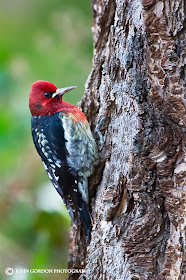Nov 21 2013 Boundary Bay, Delta British Columbia. Sunny and Cold
The Short-eared Owls are back. In 2012 I first saw them on Oct 30, this year a little later on Nov 12. That doesn't mean they weren't there before, I just wasn't looking closely enough.
I was wondering where these beautiful owls go to each summer so I include a few links below.
I have copies and pasted a few paragraphs from the Bird Studies Canada website with a link at the bottom that gives comprehensive information about these birds.
The Short-eared Owl (
Asio flammeus) is a species of
Special Concern in Canada because of long-term population declines
and loss of habitat (see
COSEWIC report). Short-eared Owls are an open-country bird
and will wander extensively within their breeding and wintering
ranges hunting for small mammals. Because of their nomadic nature,
it is difficult to monitor populations. For this reason, little is
known about Short-eared Owls.
The Problem
Grasslands are one of the ecosystems that are the most at risk,
and grassland bird populations have shown greater and more
wide-spread declines than any other group of North American birds.
Christmas Bird Count data shows a 3% annual decrease in the North
American Short-eared Owl population, with the Canadian population
suffering nearly a 25% decrease in the last decade alone.
Short-eared Owls nest, rest, and feed in open areas such as
fallow fields, hay fields, grasslands, airports, and meadows. Loss
and degradation of these habitats are thought to be the major threat
to Short-eared Owls.
 |
| Short-eared Owl (Asio flammeus) 72nd Ave Boundary Bay, Delta B.C. |
Behaviour
One of the most notable characteristics of a Short-eared Owl is
its buoyant and somewhat erratic moth-like flight. Short-eared Owls
nest and rest on the ground, in thick cover, and are often found in
communal groups in the winter. As the snow accumulates, Short-eared
Owls will seek shelter in trees. Short-eared Owls tend to be more
active during the day than are most other owls, but are generally
crepuscular (most active at dawn and dusk), especially during
winter.
The Short-eared Owl (
Asio flammeus) is a species of
Special Concern in Canada because of long-term population declines
and loss of habitat (see
COSEWIC report). Short-eared Owls are an open-country bird
and will wander extensively within their breeding and wintering
ranges hunting for small mammals. Because of their nomadic nature,
it is difficult to monitor populations. For this reason, little is
known about Short-eared Owls.
The Problem
Grasslands are one of the ecosystems that are the most at risk,
and grassland bird populations have shown greater and more
wide-spread declines than any other group of North American birds.
Christmas Bird Count data shows a 3% annual decrease in the North
American Short-eared Owl population, with the Canadian population
suffering nearly a 25% decrease in the last decade alone.
Short-eared Owls nest, rest, and feed in open areas such as
fallow fields, hay fields, grasslands, airports, and meadows. Loss
and degradation of these habitats are thought to be the major threat
to Short-eared Owls.


















































